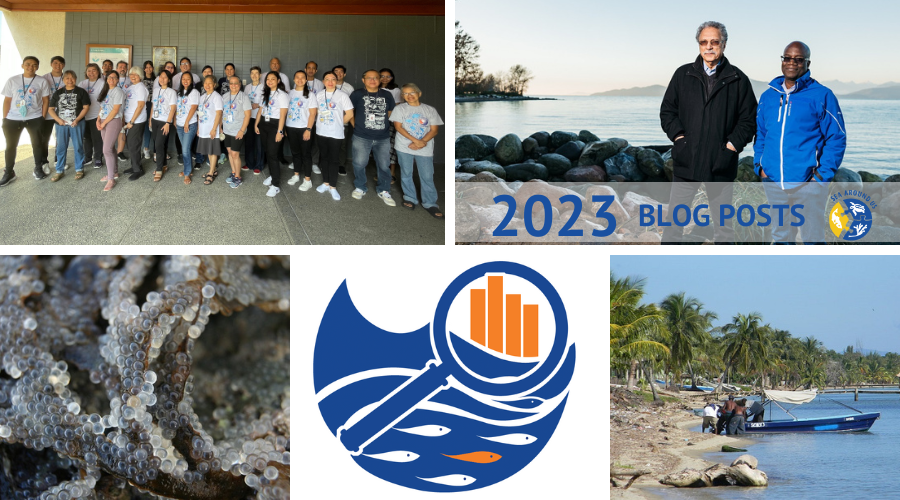Jump to: January, February, March, April, May, June, July, August, September, October, November, December
December
Making an inaccessible text available
Navigating challenges in scientific publishing: A letter to young scientists
Sea Around Us unveils new logo
November
Tuna species popular in sashimi and poke bowls in sharp decline in the Indian Ocean
Once they have laid their eggs, fish become ‘young’ again
October
Sea Around Us project manager and AquaMaps coordinator launch aquatic data sciences course
Toward a one-day conference devoted to the Gill-Oxygen Limitation Theory
September
Egyptian Mediterranean fisheries in urgent need of better management
Overfishing and climate change impacts on New Zealand’s fish populations were hidden – until now
Empowering future leaders and exploring nature conservation at St. Catherine’s College
Market-based solution makes the case for blue carbon
August
Fish species show surprisingly narrow combination of traits
FishBase: A citation powerhouse and essential resource in dealing with global issues
July
Large fish more vulnerable to climate change-induced fish kills
International FishBase and SeaLifeBase Symposium – 2023
Socotra’s catch reconstruction: rising pressure on overfished stocks
June
How warmer waters from climate change affect fish’s biochemistry (and growth)
Explore the Sea Around Us database – in two minutes
May
Rising catches in the Indian Ocean hint at risk to sustainability
Daniel Pauly receives honorary doctorate from the University of Crete
April
Keep growing – Fish’s growth is not reduced by spawning
Fish biodiversity facing global change – Sea Around Us co-organizes FISHGLOB conference
March
Paper Park Index helps identify 49 unprotected marine protected areas
Event – Vanishing Fish: The Fight for Global Ocean Justice
February
‘Nobel Prize for environment’ awarded to Daniel Pauly and Rashid Sumaila
Daniel Pauly at IMPAC5 – De facto MPAs vs. paper parks
January
Sea Around Us presents report findings at the European Parliament
Most coral reef sharks and rays may be at risk of extinction


